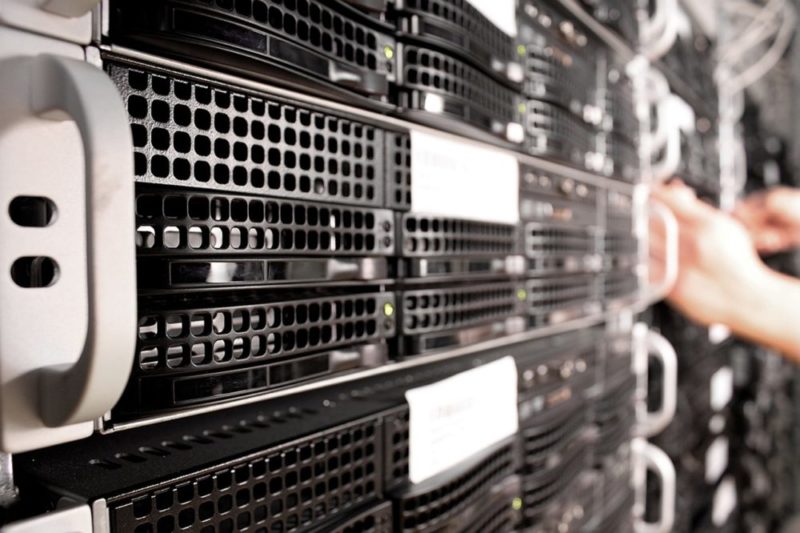What Are Servers & How Do They Work?

When you visit a website, stream a video, or send an email, servers are working behind the scenes to handle those requests. Understanding how servers work can help you make sense of the infrastructure that powers the internet and many everyday technologies. This article explores what servers are, what they do, and the different roles they play in both business and home networks.
Understanding How Servers Work
- Servers are computers specifically set aside to store information or oversee network connections. In some cases, regular computers can be converted into a server, although most servers don’t utilize a keyboard or screen, the way an ordinary desktop would.
- Most businesses use no less than one server to function as a central hard drive for different computer workstations and a central location to route peripheral device data through, similar to printers or scanners, so everybody in the workplace has access to the peripheral devices from their own desktop. The server can be connected to a Local area network (LAN), which is hard-wired, or through a Wide Area Network (WAN), like a remote internet connection.
- For most business applications, the term server refers to a type of computer. Unlike a standard personal computer, most servers do not have a screen, keyboard or mouse.
- Rather, the server comes equipped with a powerful processor, fast RAM and numerous hard drives, and additionally a network interface. Server hard drives typically operate at a higher speed than those found in desktops. The blend of high-speed hard drives, RAM and powerful processors enables a server to offer essentially higher processing power and performance than desktops systems.
- Cloud-based servers and virtual machines are also common today, often hosted by providers like AWS, Microsoft Azure, or Google Cloud, offering scalable computing without physical hardware on-site.
Functions
To understand how servers work, it helps to look at the range of functions they perform—from data storage and printer management to providing database services. Many business organizations frequently keep up individual servers devoted to one task, for example, email. Servers provide a safe and centralized method of data storage. The less intense information management needs of smaller businesses organizations allow them to use one server which provides a combination of available functions.
Different Types of Servers
A server computer can be set up to play out a few various types of tasks. A mail server is specifically designed as a central location for all email that is handled through a network. Whereas a web server contains the greater part of the files and documents that are important to display any site and deal with any interactivity through a web browser.
Data servers contain documents that individuals need to share through a network. Basically, these servers are storage for various files and documents that should be accessed by multiple devices on the network.
Other common modern server types include media servers, database servers, and application servers, which support business applications or personal use such as video streaming.
Servers on Home Networks
Servers can be helpful for home use and also for business. A home network could use a server to spare hard drive space on every family members to personal home devices or a PC and in addition to giving access to shared files, printers, scanners, or other peripheral gadgets that maybe utilized by more than one individual.
Home servers can sometimes support network infrastructure, but most homes today use dedicated routers or mesh Wi-Fi systems. Modern day devices, similar to refrigerators and lighting networks, can likewise be connected to a server that will enable members to control the appliances remotely. Many smart appliances and Internet of Things (IoT) devices now rely on cloud services rather than local servers to provide remote access and automation.
Since a server can be created using any PC, it isn’t troublesome for a family to make a server from an obsolete PC that has been replaced. However, most households today rely on cloud storage solutions like Google Drive or iCloud rather than managing a physical home server.
Client-Server Model
Many servers keep running on the client-server model. This implies the computers connected to the server are clients and the server houses the data and software those clients need to use for their processing. A centralized server can fill in as the entryway to the web for a few computers that are directed to that server.
Generally, the server gives a digital pathway to every client to get to the web or utilize a unified software. This client-server model enables business organizations or home users to buy one rendition of software and offer that version with the majority of the computers on the system.
Today, many software companies provide subscription-based licensing (Software as a Service or SaaS), which allows multiple users access through cloud-based servers. Running software on a remote server enables every workstation to keep up its own processing speed and memory storage independently from the demand of the software. In many modern networks, servers are virtualized or containerized using platforms like Docker or Kubernetes to manage applications efficiently at scale.
Conclusion
Servers are a foundational part of modern computing. From managing data and devices to hosting websites and applications, they support everything from personal networks to large-scale enterprise systems. By understanding how servers work, you gain insight into the systems that keep our digital world connected and running efficiently.
Would you like to receive similar articles by email?





